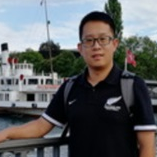TiO2 and Its Nanocomposites
A special issue of Crystals (ISSN 2073-4352). This special issue belongs to the section "Crystal Engineering".
Deadline for manuscript submissions: closed (31 December 2021) | Viewed by 4616
Special Issue Editors
Interests: battery and energy storage materials; transmission electron microscopy; TiO2 nanocomposites; light metals and alloys
Interests: TiO2 crystalline nanostructures; conducting polymers; electrochemical characterization; sensors; gluten detection.
Interests: environmental nanomaterials; photocatalytic materials; metal/metal oxide composites
Interests: corrosion & surface protection; rapid solidification & powder metallurgy; microstructure & micro-defects of materials; magnetic materials
Special Issues, Collections and Topics in MDPI journals
Special Issue Information
Dear Colleagues,
TiO2 is a non-toxic, low-cost, and chemically stable material that has remarkable catalytic and distinctive semiconducting properties. TiO2 crystals exist in three main crystal structures: anatase, rutile and brookite, and many other minor phases, including monoclinic TiO2-B, columbite TiO2, and ramsdellite TiO2-R. In the last few decades, TiO2 and its nanocomposite materials have been attracting tremendous interest in a wide range of research and application areas, including photocatalysis, sensors, and environmental and energy applications.
We invite researchers to contribute to the Special Issue on TiO2 and its nanocomposite materials, which is intended to serve as a unique multidisciplinary platform covering broad aspects of science, technology and the application of TiO2 and its nanocomposite materials.
The potential topics include, but are not limited to:
- Synthesis and preparation of TiO2 nanomaterials;
- Properties of TiO2 nanomaterials;
- TiO2-based composite materials;
- TiO2-enhanced coatings;
- Black TiO2 nanomaterials;
- TiO2-based photocatalysis;
- TiO2-based sensors;
- Environmental and energy storage applications;
- Other applications of TiO2 nanomaterials.
Dr. Shanghai Wei
Dr. Cristina Dumitriu
Dr. Yangsi Liu
Prof. Dr. Yuxin Wang
Guest Editors
Manuscript Submission Information
Manuscripts should be submitted online at www.mdpi.com by registering and logging in to this website. Once you are registered, click here to go to the submission form. Manuscripts can be submitted until the deadline. All submissions that pass pre-check are peer-reviewed. Accepted papers will be published continuously in the journal (as soon as accepted) and will be listed together on the special issue website. Research articles, review articles as well as short communications are invited. For planned papers, a title and short abstract (about 100 words) can be sent to the Editorial Office for announcement on this website.
Submitted manuscripts should not have been published previously, nor be under consideration for publication elsewhere (except conference proceedings papers). All manuscripts are thoroughly refereed through a single-blind peer-review process. A guide for authors and other relevant information for submission of manuscripts is available on the Instructions for Authors page. Crystals is an international peer-reviewed open access monthly journal published by MDPI.
Please visit the Instructions for Authors page before submitting a manuscript. The Article Processing Charge (APC) for publication in this open access journal is 2600 CHF (Swiss Francs). Submitted papers should be well formatted and use good English. Authors may use MDPI's English editing service prior to publication or during author revisions.
Keywords
- TiO2 crystals
- TEM
- Nanocomposites
- Micro/nanostructure
- Properties
- Energy storage
- Sensor
- Environmental application








